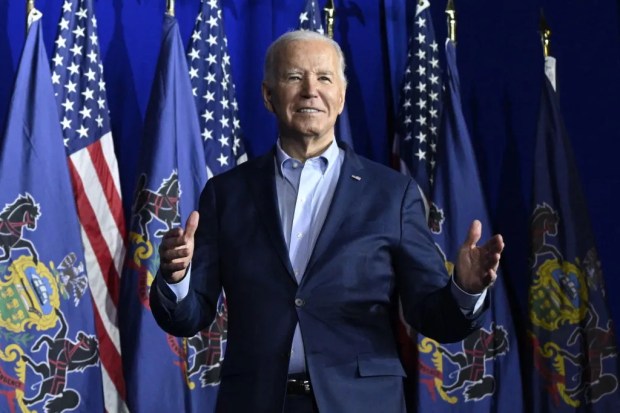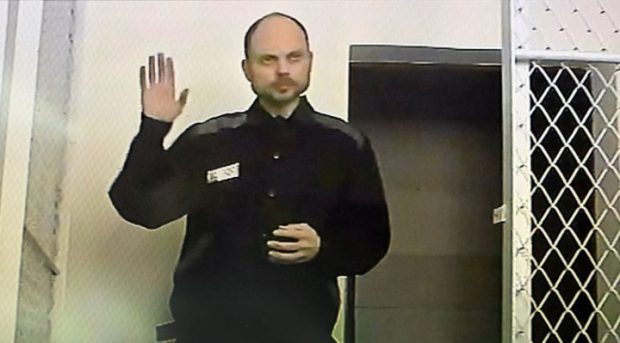Dominic Cummings’s response to the plight of the Conservative party is typically bellicose. He calls for it to be driven into the earth, the furrows planted with salt, and banished for eternity like some latter day Carthage. He sees no sense in reviving or reforming it, only blood-eagling it. It is a strong take, and perhaps unexpected from someone who was at the heart of a Conservative government just a few years ago.
Cummings is not, of course, a Conservative. He has never professed to be one, nor seemingly been a member of the party at any point. His relationship with it was always a temporary alliance driven by his own views of what to deliver for the country. Brexit was part, but not all of this, a necessary precondition to unleash the state in a new direction. It was an insurgent project which relied on proximity to the Prime Minister and cultivating an air that the PM needed Cummings more than the other way around. When that relationship failed, so too did Cummings’s project. He has no loyalty to the party, no sentimental or political attachment to it. It’s not surprising he thinks of wrecking it.
It’s an idea worth entertaining. The party has become listless, intellectually incoherent and beholden to a declining demographic of voters. It sits lower than ever in the polls and will likely lose the next general election. If there is a time to take it behind the electoral barn and put it out of its misery, it is probably now. The question remains whether anyone has the guts, the resources, and the smarts to do it.
The Conservative party’s great strength lies in its incumbency. However much it may be floundering now, it is arguably the most successful political party the world has seen, having won elections through every iteration of modern Britain. It is currently the governing party, a name everyone knows (whether they love it or hate it), and even in a disastrous election it would receive around one in three votes. There is a floor to Conservative support, and it is a high one.
Beneath that is the infrastructure which delivers electoral success. It comes in money, in volunteers, in staff, and candidates. All of this would have to be replicated by a new political party, without the benefit of the existing Conservative brand and with an uncertain chance of success.
The first challenge would be money. Whilst British politics is not as awash with cash as across the Atlantic, a serious challenge to an incumbent party takes serious funds. In the year containing the last general election, the major parties spent in excess of £50 million each. Reviewing that table, you see a pretty neat correlation between expenditure and results. Even outside of an election you need to spend, to ensure you have the right staff and resources when peacetime ends – covering everything from policy research to electoral strategy.
A new party cannot hope to function without this and would have to pay for it. The money would have to come from somewhere, most likely major donors. The only party that doesn’t rely on the very wealthy for survival is Labour, which draws significant funds from the unions. A new party would have the challenge of either convincing a few people to give them vast amounts of cash, or a vast amount of people to chip in a little. Even if this happens, the party has to be wary – people who give you money tend to want something in return.
Many political donors view the money they give as transactional. It is not simply bungs for positive policies, but they are likely to want to set the direction of travel. Some will want to control the minutiae, especially those attracted to a newly developing party. It would be hard to stay focused on the issues a new party has identified if they are not the ones the money men and women get excited at. Donors’ demands could easily curtail a radical agenda, but they would be absolutely necessary for setting up a professional party.
Even if you get the cash, a successful party cannot be run on paid staff alone. Election expenses rules and available resources make this almost impossible. Parties rely on volunteers to stuff envelopes and knock doors and do all the bread-and-butter parts of campaigning. The Tories have around 200,000 members, and Labour 500,000 – at a guess, probably 10 per cent of these regularly turn out to campaign. A new entity would similarly need to be able to deploy a couple of dozen volunteers per seat on average. Equally, it would have to recruit and nominate a reasonably full slate of candidates – which would take 650 putative MPs and ten signatures to support each one.
Any new political entity will struggle with this. The reality is that most people are not engaged enough in politics to pound the streets. The ones that do are a minority within a minority. It’s hard to find a bunch of these ready to join in with a new party. The ones most likely to move in are the ones who are already involved in voluntary politics but not at home in any of the main parties. These tend to be the strangest of all, those with bizarre and borderline offensive views or personalities. There’s a reason most embryonic parties are beset with scandals about their founding fans. If you don’t believe me, spend a little while looking at the local politicians who regularly flip between parties.
With cash and bodies in place, the new party would still lack many of the intangible assets the leading parties have built up. Most striking would be the absence of data. For Labour and the Tories, a couple of decades worth of canvassing has given them hundreds of thousands of interactions with voters, allowing them not only to grade support, but predict it (not always well, mind). They can cross match voter responses with demographic data and use it to plot campaigns. Unless a new party found an effective way to conjure this from open source or buyable data (Vote Leave did) they will be unable to mount a professional, 21st century campaign.
This points towards the hardest thing for a new party to find – voters. No new party has made significant parliamentary in-roads across the UK since the SDP in 1983. Ukip failed to ever win a seat at a general election, a fate shared by Change UK and the post-Tory independents in 2019. Moving the dial at first past the post requires significant voter engagement.
The difficulty with this is that many voters are habitual. Only around one in three voters switches parties at each election, curtailing the market for any new party. Those that are not actively engaged in politics are harder to reach and harder to sway. Voting patterns are complex, but any putative party must break into the national narrative away from the Westminster bubble, resonating with people in their chats in the pub in a way that turns into crosses on ballot papers.
Beyond this lies a further challenge – knowing what a new party could stand for. Recent third parties have sought to lead voters more than follow them, running from a liberal centre-ground that has little appeal to voters and little to differentiate it. A new challenger party would have to connect where voters actually are.
None of this is, however, to say it can’t be done. Such an act could be carried out with the right resources and attitude and could change the shape of British politics forever.
For all its legacy, the Tory party has structural weaknesses that could be exploited and is at a low ebb of popularity, while the Labour party seems unable to take decisive advantage. If forces are to align against it, now is the most likely time.
With the right thinking and organisation, a new party could exploit the turmoil in the Tories and some of their long-term faults to steal away voters and ultimately supplant them. By breaking the current political paradigms, something new could eviscerate the Conservative party – not simply replacing it, but shifting the dynamics of British politics. With some irony, Vote Leave and the 2019 election is perhaps the model for this.
For all its incumbent popularity, the Conservative party also has a ceiling on its support. There are a lot of people who would never vote blue, even if the party’s policies attract them. This was the underlying rationale for the Red Wall – seats that voted Tory less than you would expect on sheer demographics. Similar pockets exist elsewhere: the comfortably off who avoid the Tories for cultural reasons (amplified by Brexit); inner-city voters; and some ethnic minorities. These could be rich seams for a new party to mine: those who might welcome a right of centre message on certain issues but have a brand-aversion to voting Tory.
To win these over, you’d need to build the right organisation. Normal Westminster donors could be avoided, if instead the party appealed to new generations of entrepreneurs who saw their involvement as more than tit-for-tat or cash-for-peerages. Handling it like a high-risk VC project could bind in a more dynamic type of donor, who may be altruistically motivated, or believe their rewards would come from a more prosperous country, not a one-off favourable policy.
With the cash in place, setting up an effective team could be done quite easily. Next, to establish a serious threat, a new party would want to win some MPs the easy way – defections. This would grab headlines and form a vanguard, ideally poaching from multiple political parties. While defection is never an easy decision, there are many MPs now in the Tory party who know their careers are towards an end and are eyeing the next election nervously. They could be ripe for chancing their arm in a breakaway.
Fighting the next election would be harder. A shrewd party would probably be able to find a cadre of interesting candidates in the world of policy, close to politics but not already bound to a party. These would be pushed into the seats you might win. Beyond that, the task would be to assemble a broader slate of people who will not embarrass your initiative. A new party can court the well-meaning but apolitical, taking advantage of the blank slate. The people who run the local foodbank or are supporting the local hospital – those unlikely to turn out to be extremists or perverts, perfectly comfortable with raising some attention for their cause, and fundamentally unbothered about winning.
You’d hope that these would be able to muster some volunteers and momentum. If not, a new party could pivot to less traditional campaigning. No existing party has fully found the winning solution when it comes to digital vote-mongering. A new party, forced to operate without the depth of historic data, will have the lean hunger that leads to innovation, and may crack the winning formula. You’d also need a leader, someone with enough of an ego to do it, but not turn it into a vanity project or grift. Someone who can raise a rabble, but equally doesn’t scare the horses – you don’t want to generate another Boris or Farage.
Of course, what it comes down to is voters. A smart new party would hit where the other parties are weak. This means going after the voters disaffected by Labour but let down after turning Tory last time. It would be the Red Wall Redux with a culturally conservative platform less beholden to Conservative economics. Focusing on crime, state capacity and living costs could drive a wedge between Labour and the Tories in the centre ground of the voters, not the imagined middle of the columnists.
You’d lead on cracking down on crime, funding frontline services and tax cuts that hit the lower middle more than the top. You’d say the things the Tories can’t because they don’t want to spend money, and the stuff that Labour’s left-wing stops them from saying. The most politically homeless ones aren’t the centrists, but the ones who want immigration down, criminal sentences up and a more interventionist economic policy. That is who you’d have to go after.
Perhaps most of all, the new party would have to be prepared to hand the keys to Keir Starmer. Even with an appeal to Labour voters, tactical voting would work against a new party, and taking votes off the Tories will help the left in marginal seats. Displacing the Conservatives would be at least a two-election project, one to reduce them and one to replace them. It becomes easier for a new party if the Tories are already weakened, losing as many MPs (and consequently volunteers and money) as possible. If a new government changed the voting system, this would make it even easier for our imaginary to swipe at the Tories in the second run.
Whether you want to kill the Conservative party is a different discussion. A new entity wouldn’t work for all current Tory supporters, and nor should it aim to. Replacing the Tories means advancing the realignment, occupying new electoral ground with a new political message. Whether it can be done lies in strategy and logistics.
Much about the current system supports Conservative continuity. But the party is weak, headed to an electoral challenge and resting on supporters who are largely disenchanted. With Labour likely to form the next government anyway, many would be willing to take a crack on an insurgent disrupter. The question is, can anyone form one?
Only one political force has managed to deliver an election winning shift in recent years: Vote Leave. Whatever your views on Brexit, it cannot be denied that VL managed to bring together money, professional expertise and popular support by finding a new dimension to British politics. If you were going to challenge the incumbents, their playbook would be where you’d start. Which brings us back around to Dom.
Got something to add? Join the discussion and comment below.
Get 10 issues for just $10
Subscribe to The Spectator Australia today for the next 10 magazine issues, plus full online access, for just $10.
This article first appeared on the Joxley Writes Substack.



















Comments
Don't miss out
Join the conversation with other Spectator Australia readers. Subscribe to leave a comment.
SUBSCRIBEAlready a subscriber? Log in